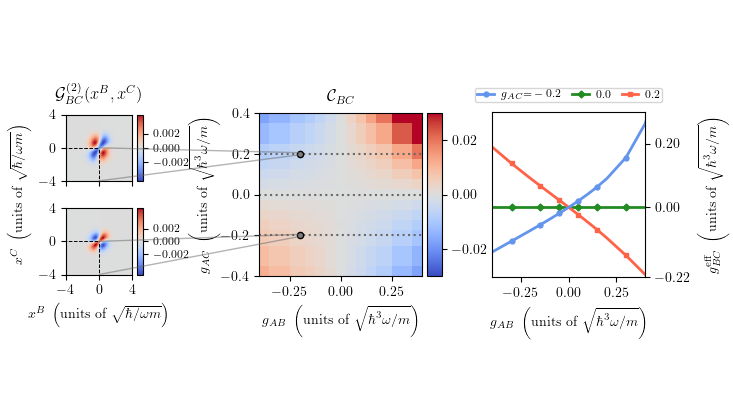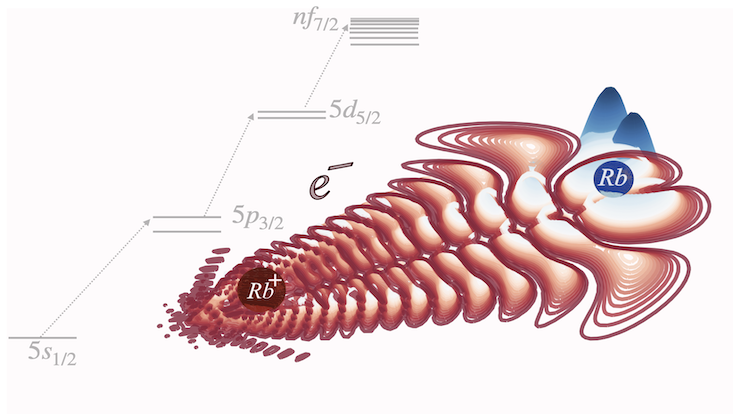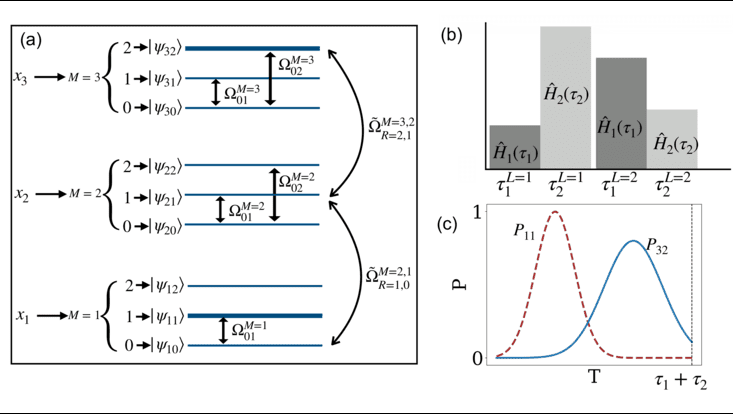Quantum Physics
Crossover from attractive to repulsive induced interactions and bound states of two distinguishable Bose polarons
4 July 2025

Photo: AG Schmelcher
When a single impurity atom is immersed in an ultracold environment, the interaction between the impurity and the surrounding medium excites the latter, resulting in the impurity being 'dressed' by these excitations. This dressed state - the bare impurity together with the excitations of the medium - can be understood as a quasi-particle (polaron), whose properties differ from those of the bare impurity. Investigating these altered properties using numerical and analytical methods, the more complicated impurity-bath system can be understood in terms of an effective one-body picture. In such an effective model, the quasi-particle can be described, among other effective parameters, by an effective mass. In this sense, the concept of a quasiparticle is a powerful tool for intuitively understanding complex systems. In systems comprising two or more impurities, it has been found that the surrounding majority species can mediate an effective interaction between the emergent quasi-particles, even when the bare impurity atoms are non-interacting. In one-dimensional ultracold setups, where the impurities interact with a bosonic medium, the mediated interaction is commonly found to be attractive when the impurities interact with the bath with the same strength.
In this work, we consider two distinguishable impurity atoms that each interact with an individual interaction strength with a harmonically trapped bosonic majority species. It is found that when the impurities interact both either repulsively or attractively to the majority species, the latter mediates a two-body correlated behavior between them. In the reverse case, where one impurity is attractively coupled to the medium, while the other repels it, an anti-correlated behavior is induced between them. By comparing full many-body calculations with an effective two-body model, we can associate the induced correlated or anti-correlated behavior of the impurities with the presence of attractive or repulsive induced interactions, respectively. Furthermore, in the strongly attractive regime we observe the formation of bound states formed by the impurities (bipolaron) or the impurities and one bath particle (trimer state). Our results pave the way for controlling polaron-induced correlations and creating relevant bound states.
Publication:
F. Theel, S. I. Mistakidis and P. Schmelcher
"Crossover from attractive to repulsive induced interactions and bound states of two distinguishable
Bose polarons"
SciPost Phys. 16, 023 (2024)


